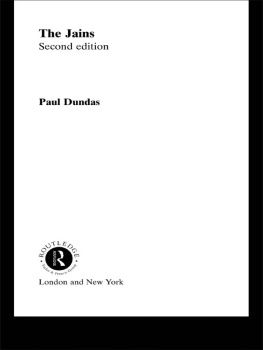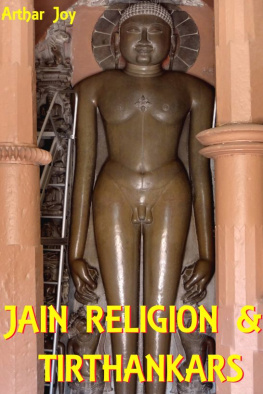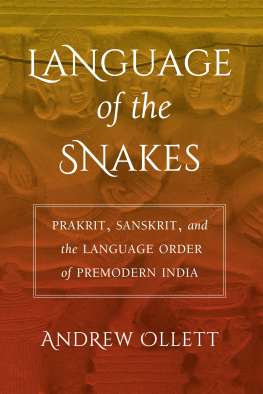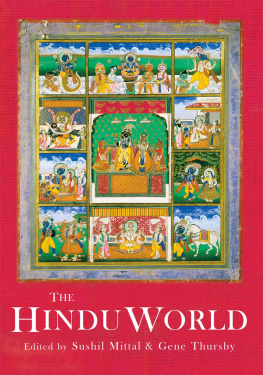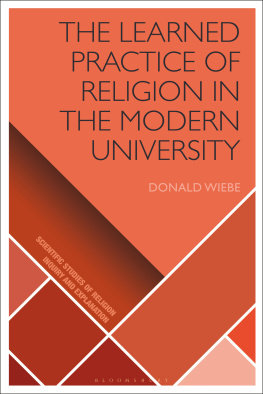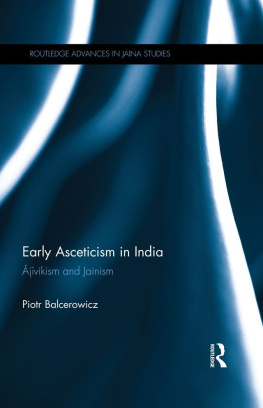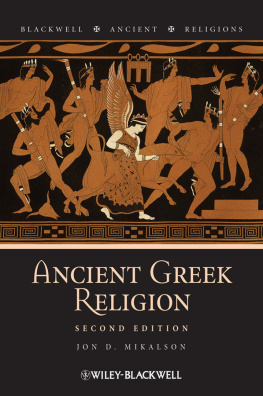The Indian religion of Jainism, whose central tenet involves non-violence to all creatures, is one of the worlds oldest and at the same time least-understood faiths. Paul Dundas looks at Jainism in its social and doctrinal context, discusses its history, sects, scriptures and ritual, and describes how the Jains have, over two and a half thousand years, defined themselves as a unique religious community.
This revised and expanded edition takes account of new research into Jainism as carried out over the last ten years.
Library of Religious Beliefs and Practices
Series editors:
John Hinnells and Ninian Smart
This series provides pioneering and scholarly introductions to different religions in a readable form. It is concerned with the beliefs and practices of religions in their social, cultural and historical setting. Authors come from a variety of backgrounds and approach the study of religious beliefs and practices from their different points of view. Some focus mainly on questions of history, teachings, customs and ritual practices. Others consider, within the context of a specific region, the interrelationships between religions; the interaction of religion and the arts; religion and social organisation; the involvement of religion in political affairs; and, for ancient cultures, the interpretation of archaeological evidence. In this way the series brings out the multi-disciplinary nature of the study of religion. It is intended for students of religion, philosophy, social sciences and history, and for the interested lay person.
Other titles in the series include:
Hindus
Their Religious Beliefs and Practices
Julius Lipner
Mahayana Buddhism
The Doctrinal Foundations
Paul Williams
Muslims
Their Religious Beliefs and Practices
Andrew Rippin
Religions of Oceania
Tony Swain and Garry Trompf
Theravada Buddhism
A Social History from Ancient Benares to Modern Colombo
Richard Gombrich
Zoroastrians
Their Religious Beliefs and Practices
Mary Boyce
First published 1992
by Routledge
This edition published 2002
by Routledge
11 New Fetter Lane, London EC4P 4EE
Simultaneously published in the USA and Canada
by Routledge
29 West 35th Street, New York, NY 10001
Routledge is an imprint of Taylor & Francis Group
This edition published in the Taylor & Francis e-Library, 2004.
1992, 2002 Paul Dundas
All rights reserved. No part of this book may be reprinted or reproduced or utilized in any form or by any electronic, mechanical, or other means, now known or hereafter invented, including photocopying and recording, or in any information storage or retrieval system, without permission in writing from the publishers.
British Library Cataloguing in Publication Data
A catalogue record for this book is available from the British Library
Library of Congress Cataloging in Publication Data
A catalog record for this book has been applied for
ISBN 0-203-39827-0 Master e-book ISBN
ISBN 0-203-39952-8 (Adobe eReader Format)
ISBN 0-415-26605-X (hbk)
ISBN 0-415-26606-8 (pbk)
To my parents
Acknowledgements
This book has been written for university students of Indian religions and members of the world-wide Jain community.
Two longstanding debts must be acknowledged at the outset: to John Brockington and K.R. Norman for much help and encouragement over the years.
Many other debts have also been incurred. John Cort has been a continual source of assistance and advice. Phyllis Granoff has inspired me with her enthusiasm and support. I have also been fortunate in having been able to discuss Jainism with Marcus Banks, Mike Carrithers, Lance Cousins, James Laidlaw, Tom McCormick, Jo Reynell and Bob Zydenbos. Like all those working on the Jains during the last ten years or so, I owe much to the writings and counsel of Padmanabh Jaini.
Thanks are also due to Nalini Balbir, Klaus Bruhn (for the single most useful piece of advice given me prior to starting writing), Eileen Dwyer, Tony Good, Savitri Holmstrom, Caroline Humphrey and Dave Jones.
It would have been impossible to have produced this book without the assistance of many Jains in India. In particular, I am grateful to: (in Gujarat) Muni Jambuvijaya, Kantibhai Vora and family, the directors and staff of the Lalbhai Dalphatbhai Institute of Indology, Ahmedabad, and Pavankumar Jain and other members of the Kanji Svami Panth at Songadh; (in Karnataka) Carukirti Svami Bhattarak of Shravana Belgola, Acarya Parshvasagar Muni, Professor M.D. Vasantharaj and Shubhacandra of the Department of Jainology and Prakrits, University of Mysore; and (in Rajasthan) Acarya Tulsi, Yuvacarya Mahaprajna, Muni Mahendrakumar and Mr R.L. Kothari.
I would like to express my gratitude to the British Academy for providing financial assistance on three occasions which enabled me to carry out research in India.
Finally, my thanks to John Hinnells for inviting me to write this book.
Paul Dundas
Edinburgh
April 2002
Preface to the second edition
Through the happy operation of academic elective affinity the first edition of this book appeared in 1992 at what turned out to be the beginning of a remarkably productive period of international publication and research on the Jain religion. Quite simply, much more is now known about the teachings, history and social dynamics of Jainism than a decade ago. I am therefore grateful to Roger Thorp for inviting me to produce a new revised and expanded edition of The Jains in which this recent work could be utilised and acknowledged. As well as revising and adjusting the main text, I have added relevant new material throughout, while the annotation and bibliography are substantially more extensive than in the first edition. In addition, I have supplied the fully diacritical spelling lacking in the first edition.
I would like to thank my colleagues, whose names can be seen in the bibliography, for keeping me abreast of their work and making Jain studies such a fascinating area of research at the moment.
Paul Dundas
Edinburgh
April 2002
A note on transliteration and pronunciation
Sanskrit e is pronounced as the equivalent of the vowel sound in English hay. The Sanskrit diphthong ai is pronounced as in English by. However, in modern Indian languages, it is equivalent to the vowel sound in English hay, so that Jain will normally rhyme with English drain.
Vocalic is pronounced ri; c is pronounced as in Italian ciao; th is pronounced as in English pothole; palatal and retroflex are both pronounced sh.
Introduction
In the Deeds of the Ten Princes, a picaresque Sanskrit novel by Dain dating from about the seventh century of the common era, one of its heroes encounters on his travels a naked Jain monk called Virpaka, Ugly. The latter recounts how he was ruined by a courtesan to the extent of being left only with his loincloth, as a result of which he became disgusted with the world and, in misery and humiliation, converted to the Jain religion, abandoning clothes completely. He continues:

